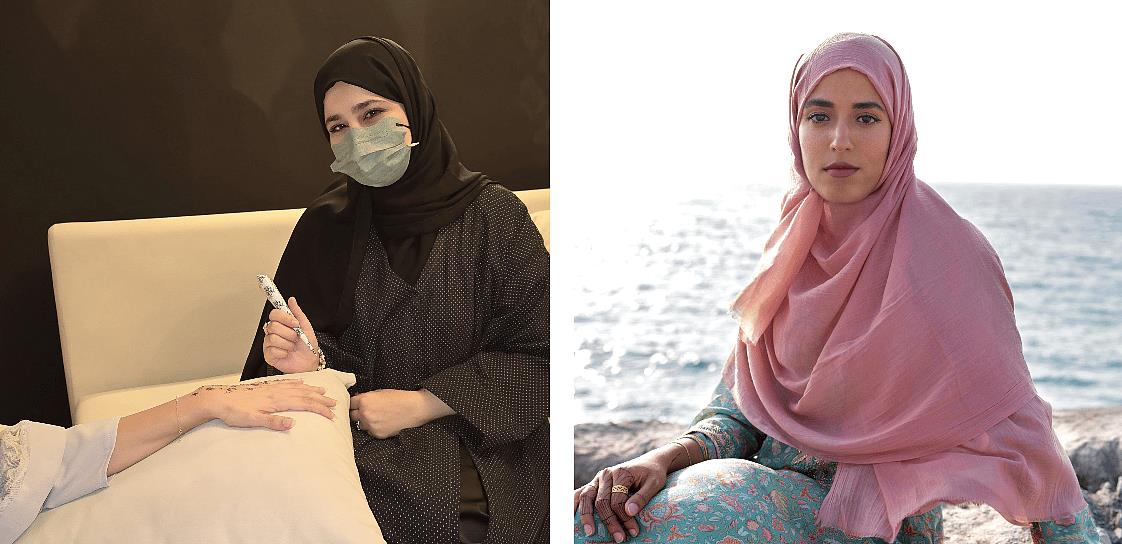
17-Hour Work Days: How UAE Henna Artists Are Dealing With Eid Rush
During this Ramadan season, Dr Azra Khamissa has already sold over 1,000 henna cones . Over the last few days, the Emirati henna influencer has all hands on deck as she along with her family members and assistants roll out more cones in anticipation of last-minute orders.
A chiropractor by profession, Dr Azra is one of the most sought-after henna artists in the UAE. Her bold and unique designs have made her a celebrity of sorts. Her focus in the lead up to Eid is usually the sale of her organic henna cones and stencils.
“There are four of us whose job is to roll out the henna cones,” she told Khaleej Times.“I have an assistant who helps me with the shipping and so on. Whoever in the house is free, they help me with rolling out the cones. It's an all hands on deck situation.”
Stay up to date with the latest news. Follow KT on WhatsApp Channels.
17-hour work daysFor another henna artist Ambreen Wahid, who has almost one million followers on Instagram, this season involves a 17-hour working day.“During the week before Eid, I usually start work at 9am and it goes on until 2am,” she said.“I usually go to my clients' homes. I try to keep everything very organised and arrive everywhere on time but the week before Eid is one of the busiest times during the entire year.”
Rihana, who moved to the UAE three years ago, works in three shifts during the season.“I focus only on group bookings during this time because that reduces the amount of time I spend travelling,” she said.“I usually take an hour or two hours of break in between the shifts to give myself a breather. Sometimes, I travel as far as Abu Dhabi and Al Ain to my clients' homes.”
The Dubai resident who also sells cones, sealing sprays and henna balms said she stops sales a few days before Eid.“The last few days, I am slammed with henna orders so I am out and about all the time,” she said.“I don't have anyone at home when people come to pick their cones.”
Despite the immense demand for her designs, Dr Azra chooses not to take too many clients to apply henna.“The whole of Ramadan is a busy time for us,” she said.“I prefer to participate in some special events and if I am feeling up to it, I will host a henna session at my house. I did it last year and it felt really nice to meet some new people.”
Trends and costsAccording to Rihana, the deep blue henna called Jagua has become very popular this year.“We are seeing a lot of demand for this,” she said.“It leaves a beautiful dark blue tint and a lot of people are loving it. It is more expensive to make, so the rates are a little high too.”
The rates of henna varies wildly depending on the intricacy of the design. Rihana said she usually charges Dh50 per side, per hand, for a simple design but in the lead up to Eid, she hikes it Dh70 per side. Ambreen agreed that she also hikes her prices marginally during the season.“Usually, I charge about Dh150 for both hands but, during the peak season, I hike it to Dh200.”
Ambreen added that white henna was also very popular during Ramadan.“It is something people like to add a little oomph to their Eid henna,” she said.“In terms of design, I started the coquette bow designs which went viral on social media. This year, there is a lot of demand for that design.”

Legal Disclaimer:
MENAFN provides the information “as is” without warranty of any kind. We do not accept any responsibility or liability for the accuracy, content, images, videos, licenses, completeness, legality, or reliability of the information contained in this article. If you have any complaints or copyright issues related to this article, kindly contact the provider above.






















Comments
No comment